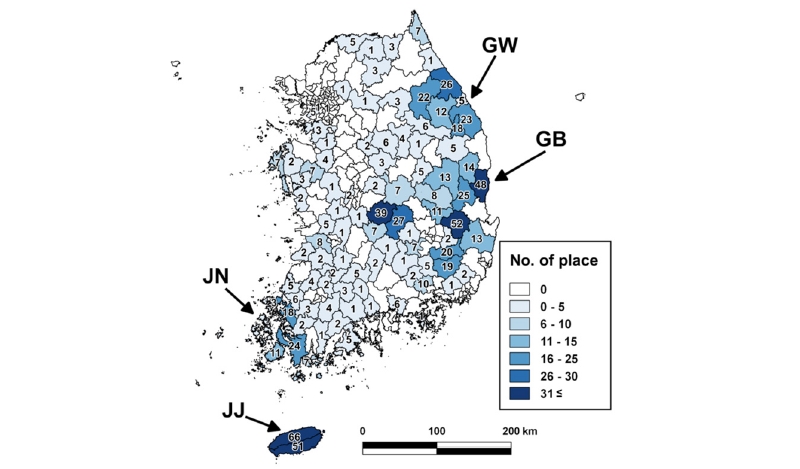Abstract
As an exotic winter weed in Korea, common groundsel (Senecio vulgaris L.) has been a recent threat to winter crop cultivation. We investigated its distribution and germination characteristics to elucidate the dominance and its reason, and screened available herbicides for the effective control of the weed. Distribution analysis revealed that S. vulgaris was widely distributed in orchards, kimchi cabbage and winter crop producing region suggesting that dispersion of Korean S. vulgaris would be affected by cultivation activity such as sharing the agricultural mechanics. Germination of S. vulgaris was superior on 20-30°C, and optimum germination temperature was 20/15°C (day/night). The seeds typically did not emerge at a burial depth greater than 4 cm. Linuron, linuron + thiobencarb, and S-metholachlor + thiobencarb demonstrated excellent herbicidal effects in S. vulgaris through an agar and soil assay. After light soil surface cultivation at around 2 cm soil depth, applying linuron, linuron + thiobencarb, or S-metholachlor + thiobencarb prior to sowing or transplanting could be a viable option to effectively and efficiently manage S. vulgaris. Taking advantage of the distribution pattern and biological characteristics of the exotic weeds occurred in the field, as well as utilizing herbicides, will help to manage problematic exotic weeds in crop cultivation.
Figures & Tables

Fig. 1. Distribution map of Senecio vulgaris in Korean croplands. The number in the map refers number of place where S. vulgaris exists. GW: Gangwon-do, GB: Gyeongsangbuk-do, JN: Jeollanam-do, and JJ: Jeju-do.


